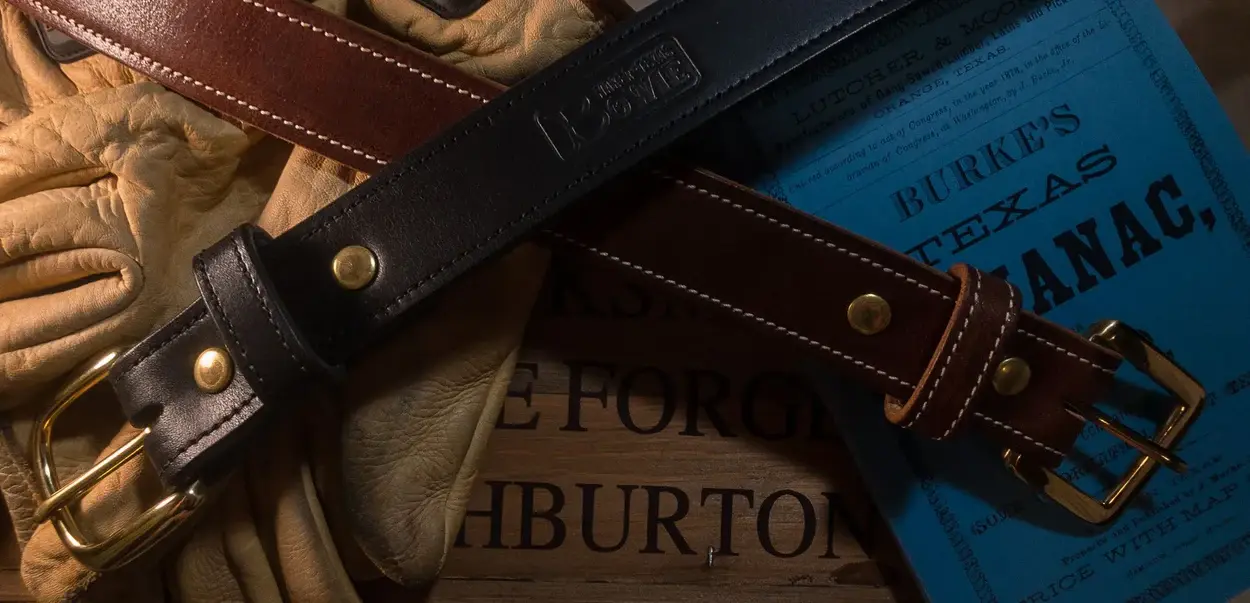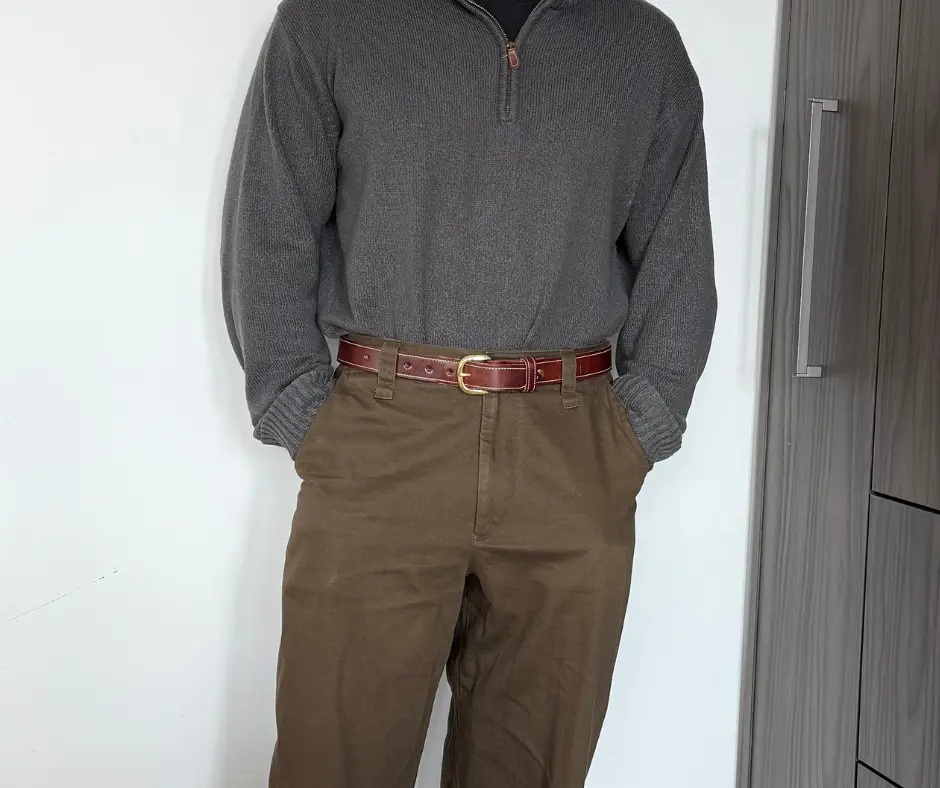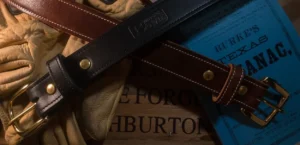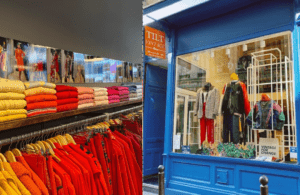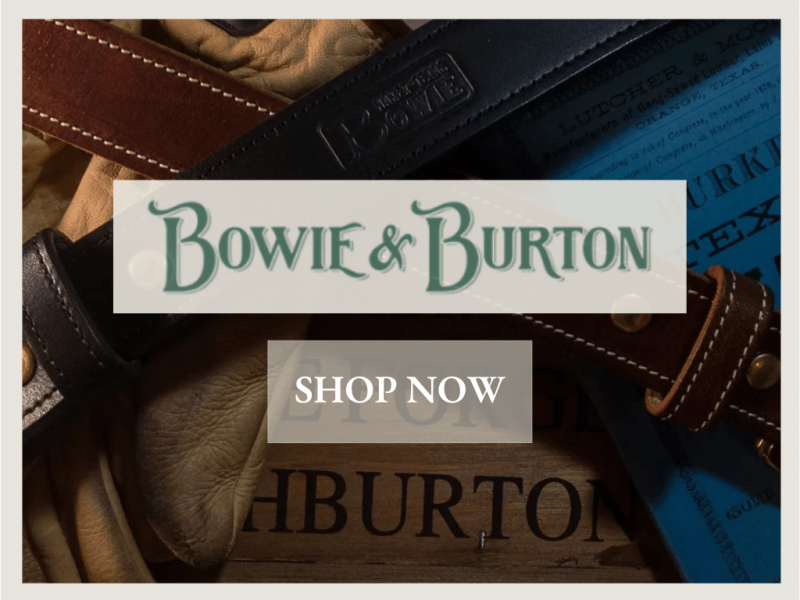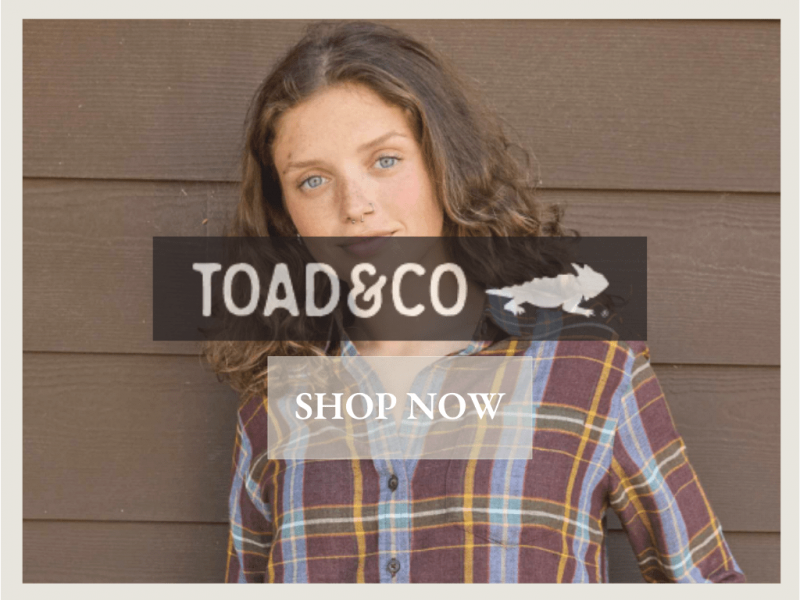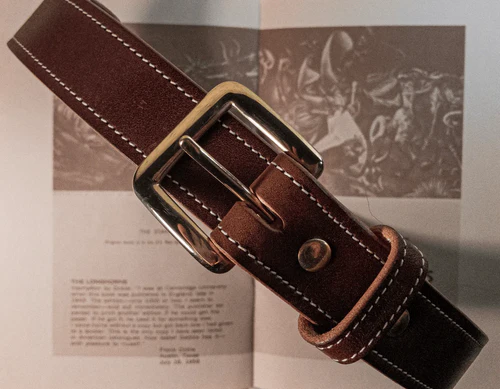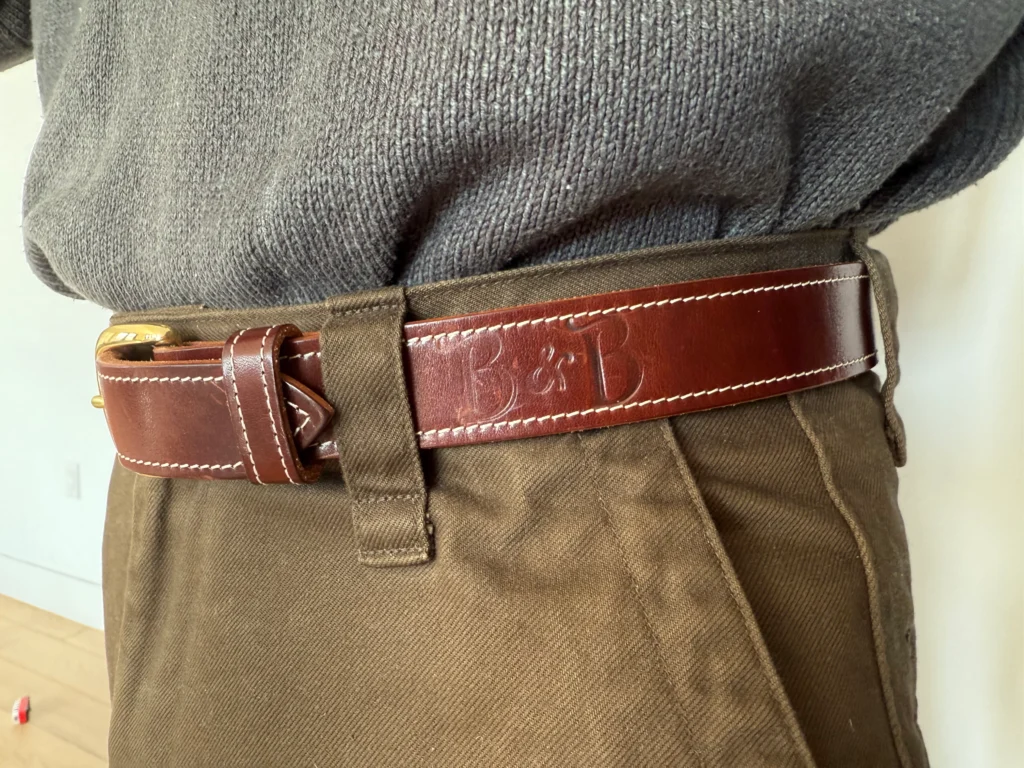Belts are easily one of the most understated functional staples in a wardrobe – those of us who wear them, wear them frequently. And those of us who pull them out once in a while, likely also purchase them infrequently. One thing is for certain, we all typically need at least one timeless and classic belt in our wardrobes. It was due time that I needed to replace my brown leather belt that had started to fall apart – in my thorough research to find a reasonably priced, well built belt, I came across Bowie & Burton.
After wearing their bridle leather belt almost every day for the last 90 days, I’ve got some thoughts to share. But first, let me tell you why I spent so much time researching belts in the first place.
My journey started with frustration. You know that moment when you realize your trusty belt is giving up on you? The leather starts cracking, the buckle gets wobbly, and suddenly your reliable daily companion isn’t so reliable anymore. That’s where I found myself three months ago, staring at a belt that had survived barely a year of regular wear.
About Bowie & Burton
I stumbled across Bowie & Burton during my hunt for a replacement. They’re a small workshop in Texas that caught my attention because they do things differently. While most companies these days are racing to make things faster and cheaper, these folks are sticking to old-school leatherworking methods. They use English bridle leather (more on what that actually means in a bit) and hand-stitch their products – something that’s getting increasingly rare these days.
First Impressions of The Brown Bridle Leather Belt
When the belt arrived, the first thing that struck me was its weight. If you’re used to department store belts like I was, this feels substantially different. The leather is thick but not stiff, and even the brass buckle feels solid. They’ve done some clever things with the design – like tapering the leather near the buckle so it slides through belt loops without catching, which I’ve found genuinely useful in daily wear.
The Bridle Leather Belt
90-Day Review: Bowie & Burton Belt Performance
After three months of wearing this belt almost daily, I’ve noticed some interesting changes. The leather has started developing what leather enthusiasts call a patina – basically, the surface has begun taking on a rich, layered look that comes from regular use. It’s like how old leather furniture develops that lived-in character over time.
The belt was pretty stiff at first (a common trait of vegetable-tanned leather), but it’s molded to my body over time. What’s impressive is that while it’s become more comfortable, it hasn’t lost its structure. The holes haven’t stretched out, and the leather hasn’t developed any weird bulges or weak spots – issues I’ve dealt with in previous belts.
The Leather – Let’s Talk Quality
Here’s where things get interesting. Remember when I mentioned English bridle leather? I had no idea what that meant when I first ordered the belt, but after doing some digging, I learned something fascinating. This type of leather goes through a specific treatment process that was originally developed for horse equipment (hence “bridle”). Both sides of the leather get treated with waxes and oils, which is why it feels so substantial compared to regular belt leather.
But what really sets this belt apart is how it’s tanned. Most modern leather gets processed quickly using chemicals – it’s efficient but often results in leather that doesn’t age well. Bowie & Burton uses something called vegetable tanning instead. It’s a slower process that uses natural materials like tree bark to turn raw hide into leather. Takes months instead of days, but creates leather that actually gets better looking as you wear it.
The Lifetime Guarantee: More Than Just a Promise
After learning about the quality of bridle leather, you might wonder how confident Bowie & Burton is in their craftsmanship. The answer lies in their lifetime guarantee – a commitment that reveals as much about their philosophy as it does about their product. Unlike the limited warranties I’ve seen with other belts, this one stands out for its comprehensiveness.
The guarantee covers what you’d expect – stitching failures, buckle defects, and structural leather issues – but what impressed me was how straightforward they make the whole process. If something goes wrong, you simply reach out to their customer service team with your order details and some photos. While you’ll need to cover the initial shipping to them (fair enough), they handle the return shipping costs. It’s the kind of no-nonsense approach that matches the belt’s practical design.
The Sustainability Dialogue
Why Leather Matters
Let’s talk about why the type of leather matters, because I’ve learned it makes a huge difference in how long a belt lasts. Think about it – we’ve been using leather for thousands of years, from early human civilizations who needed durable materials for everything from clothing to tools. There’s a reason it’s stuck around.
Modern manufacturing has given us plenty of alternatives, from synthetic materials to cheap, quickly-processed leather. But here’s what I’ve discovered: not all leather is created equal. The stuff you typically find in department stores is often what’s called “genuine leather” – which, ironically, is one of the lowest grades of leather you can get. It’s made from the lower layers of the hide and often heavily processed to look good out of the box
Understanding Full-Grain Leather: A Layer-by-Layer Journey
When we talk about full-grain leather, we’re actually discussing something fascinating about the natural architecture of animal hide. Imagine an animal’s skin as a complex, multi-story building. Full-grain leather represents the entire “penthouse level” of this structure – the uppermost layer of the hide, complete with all its natural characteristics and grain patterns.
This top layer evolved to protect the animal from its environment, developing a tight fiber structure that makes it exceptionally strong and water-resistant. When you look closely at full-grain leather, you might notice small marks, subtle variations in texture, even occasional scars or insect bites. These aren’t imperfections – they’re the leather’s biography, telling the story of the animal’s life.
The term “full-grain” means this surface has been left intact during processing, preserved in its natural state rather than being altered or corrected. Only the hair is removed. This matters tremendously for durability and aging characteristics. Those tight, natural fiber patterns create a material that’s not only stronger than other leather types but also develops a distinctive patina over time – essentially recording your own story as you use it.
To put this in perspective, let’s look at other common leather types:
- Top-grain leather has had its surface sanded down to remove “imperfections,” sacrificing natural strength for cosmetic uniformity
- Genuine leather (despite its misleading name) comes from the weaker lower layers of the hide
- Bonded leather is essentially the particle board of the leather world – scraps glued together and coated with a synthetic surface
Full-grain leather’s superiority isn’t just about tradition or craftsmanship – it’s rooted in the fundamental biology of skin structure. When Bowie & Burton chooses full-grain leather for their belts, they’re choosing to work with the hide’s natural engineering rather than trying to correct it.
The Complex Case for Leather Sustainability
Leather as a sustainable material presents a fascinating paradox that perfectly illustrates the complexity of modern consumption choices. As someone deeply invested in sustainable living, I’ve spent considerable time researching and understanding the full lifecycle impact of leather production and use. What I’ve discovered has challenged my preconceptions about what makes a material truly sustainable.
The Environmental Challenge of Leather Production
The environmental story of leather production unfolds across vast landscapes and transforms through complex industrial processes. It begins on cattle ranches that stretch across our planet’s surface, where livestock farming has reshaped entire ecosystems. The cattle industry stands as one of the world’s largest contributors to greenhouse gas emissions, primarily through methane release and deforestation for grazing land. In regions like the Amazon, vast stretches of forest give way to grazing lands daily, fundamentally altering landscapes that once teemed with biodiversity.
The journey from hide to finished leather adds another layer to this environmental narrative. Traditional chrome tanning, while efficient and widespread, introduces heavy metals and chemicals into the production chain. These processes can impact local water sources and surrounding communities when not properly managed.
A Look at the Alternatives
The search for leather alternatives reveals its own set of environmental puzzles. Synthetic leathers emerge from petroleum refineries through energy-intensive processes, essentially trading one environmental impact for another. These materials join us on a longer journey than we might expect – shedding microscopic plastic particles throughout their lifetime, contributing to a growing presence of microplastics in our oceans, soil, and water systems.
Recent innovations in plant-based alternatives – materials crafted from mushrooms, pineapple leaves, and agricultural waste – offer intriguing possibilities. Yet these alternatives often require their own intensive processing and chemical treatments to achieve leather-like properties. While they solve some environmental challenges, they create others through agricultural demands and manufacturing processes.
What’s often overlooked in these material comparisons is the lifespan factor. While synthetic alternatives might seem more environmentally friendly at first glance, their typically shorter lifespan means more frequent replacement. A single well-maintained leather item might outlast several generations of its synthetic counterparts, forcing us to consider environmental impact not just at production, but across decades of use.
A Different Perspective
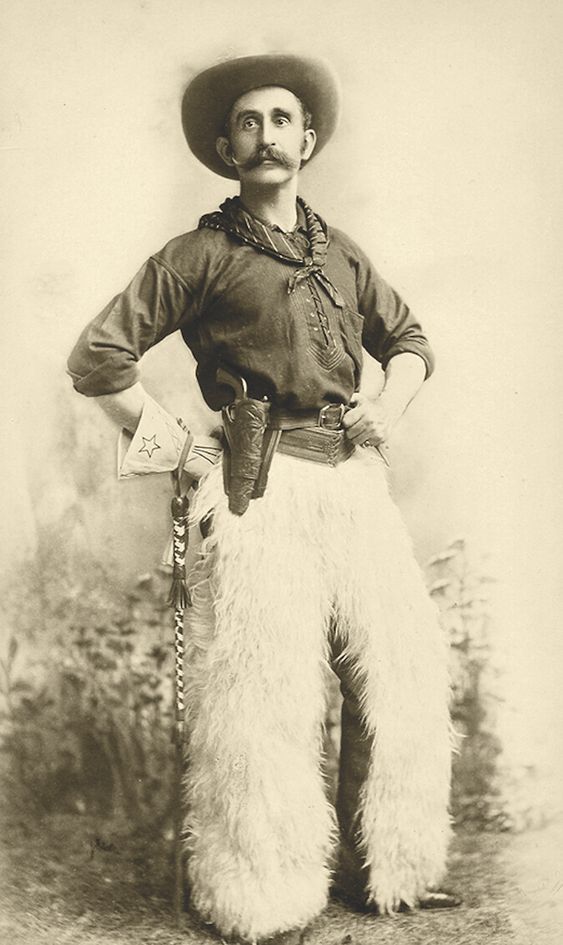
The Micro Scale
This is where the conversation gets particularly interesting, especially when we consider the concept of circular economy and resource utilization. Leather, as a byproduct of meat production, presents a compelling case for sustainable material use. Here’s why: cattle are primarily raised for meat consumption, and their hides – which would otherwise become waste material – can be transformed into durable goods that last generations. This full utilization approach mirrors traditional practices where communities used every part of an animal, minimizing waste and maximizing resource efficiency.
Think about it from a lifecycle perspective. My previous synthetic belts lasted about a year each. Over a decade, that’s ten belts produced from virgin petroleum products, shipped, and eventually discarded. Each replacement cycle represents not just material waste, but unnecessary resource extraction and manufacturing. In contrast, a single well-crafted leather belt makes use of an existing byproduct, transforming it into an object that can serve its purpose for decades.
The key lies in choosing leather goods from craftspeople who understand this responsibility. Companies like Bowie & Burton exemplify this approach through their use of full-grain leather and vegetable tanning processes. By creating products designed to last generations rather than seasons, they’re not just making belts – they’re participating in a more thoughtful approach to resource utilization.
Second-Hand Markets: Where Leather Tells Its Stories
Walk into any vintage store or browse through second-hand marketplaces, and you’ll notice something remarkable: leather goods dominate the landscape of well-preserved vintage accessories. This isn’t coincidence – it’s a testament to leather’s unique material properties and the circular economy in action.
What fascinates me about second-hand leather markets is how they validate everything we know about leather’s longevity. While synthetic materials often show their age through irreparable damage, vintage leather items frequently appear not just functional, but enhanced by time. A well-made leather bag from the 1960s might show subtle creases and color variations that record decades of use, yet remain structurally sound and completely serviceable.
The abundance of vintage leather goods also tells us something profound about material lifecycle. Unlike modern synthetic materials that often deteriorate beyond repair within years, leather’s biological structure – particularly in full-grain items – allows it to maintain integrity across decades. The collagen fiber matrix that gives leather its strength doesn’t just endure; it adapts to use patterns, developing a personalized fit and finish that synthetic materials can’t replicate.
This durability creates a unique phenomenon in second-hand markets: leather goods often retain both their functionality and value. A vintage leather briefcase might sell for prices comparable to new items, reflecting both its remaining utility and the acquired character of well-aged leather. This value retention encourages preservation rather than disposal, creating a self-sustaining cycle of reuse that epitomizes circular economy principles.
The repair factor plays a crucial role here too. Many vintage leather items in circulation today have undergone multiple repairs or restorations, demonstrating how skilled craftsmanship can extend a product’s life indefinitely. You might find a belt from the 1950s that’s had its buckle replaced or stitching renewed, yet retains its essential character and utility. Try achieving that with a synthetic belt that’s cracked or delaminated.
This vibrant second-hand market doesn’t just offer sustainable shopping alternatives – it provides empirical proof of quality leather’s longevity claims. When we invest in a well-made leather item today, we’re not just buying a product; we’re participating in a material tradition that could extend far beyond our own use.
The Vegetable Tanning Difference
Bowie’s choice of vegetable tanning, as used in this belt, further complicates the sustainability equation – in a good way. Unlike chrome tanning, vegetable tanning uses natural tannins extracted from tree bark and other plant materials. This creates leather that ages in a way that makes repair and restoration possible. The process takes longer and costs more, but the environmental impact is significantly reduced compared to chrome tanning.
Price & Value
Let’s talk about the elephant in the room – at $165, the Bowie & Burton leather belt isn’t cheap. When I first saw the price, I had to think hard about whether it was worth it. But here’s how I broke it down: my previous belts cost around $30-50 each and lasted about a year. If this premium men’s leather belt lasts even five years (and it’s built to last much longer), it works out to be a better deal in the long run.
Plus, there’s an added level of confidence about owning an item that’s built to last. Bowie & Burton is a small business making a lasting impact in the accessory market. In a world where so many things are designed to be replaceable, it’s refreshing to find something made to stick around.
Leather Longevity: Maintenance & Care
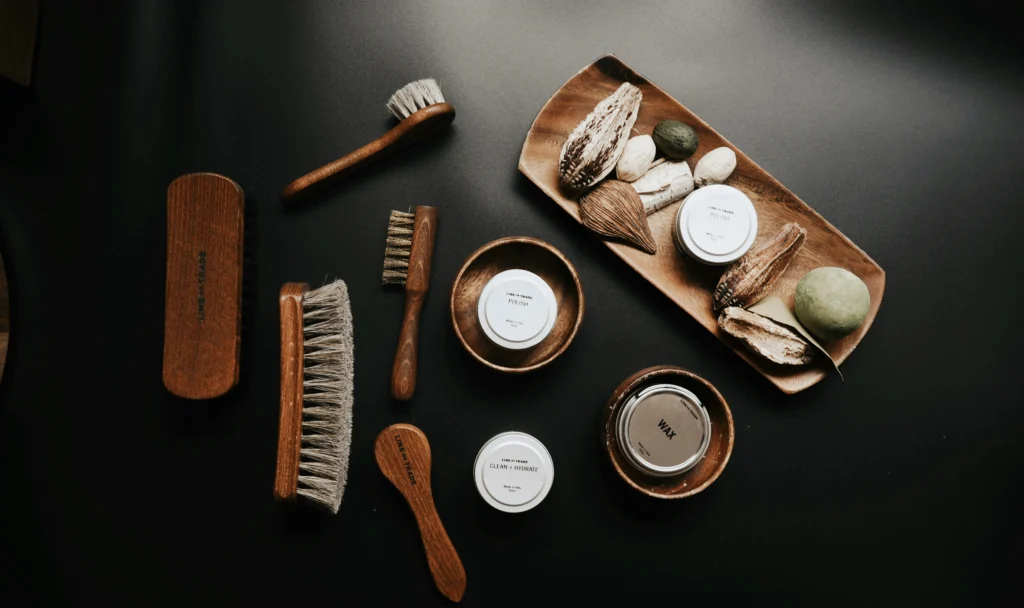
There is an art to maintaining bridle leather and Bowie & Burton breaks this down into what they playfully call “The Three Cs”: cleaning, conditioning, and storing. I recommend browsing their site for a detailed product care guide but below are some general care instructions:
- Cleaning Your Bridle Leather
- The water-resistant nature of bridle leather (a heritage from its equestrian origins) makes cleaning surprisingly straightforward
- All you need is a soft-bristled brush (I use a children’s toothbrush) and minimal water
- Gentle circular motions remove surface dirt without damaging the leather
- A quick wipe with a barely damp cloth finishes the job
- Remember: less is more with water – the leather’s water-resistant, not waterproof
- Conditioning for Longevity
- Use a high-quality leather conditioner (available at most retail stores)
- Apply with a soft cloth, paying extra attention to any marks or creases
- Let the conditioner absorb naturally
- Strategic Storage
- The biggest threat isn’t daily wear – it’s UV exposure
- Store in a cool, dry place away from direct sunlight
- Using a dust bag is ideal
- Keep the belt loosely coiled when not in use
Final Thoughts
After three months of daily wear, I’m confident this belt was worth the investment. It’s one of those rare products that delivers exactly what it promises – a well-made, durable belt that should last for years to come. Yes, it’s more expensive than what you’ll find at the mall, but there is also fundamentally different in quality, craftsmanship, and longevity.
If you’re tired of replacing belts every year and want something that’s built to last, this might be your answer.
Check Out Our OTher reviews!
If you found this review helpful, you may also enjoy our review on the Alpaka backpack and Kygies Wool Slippers!
